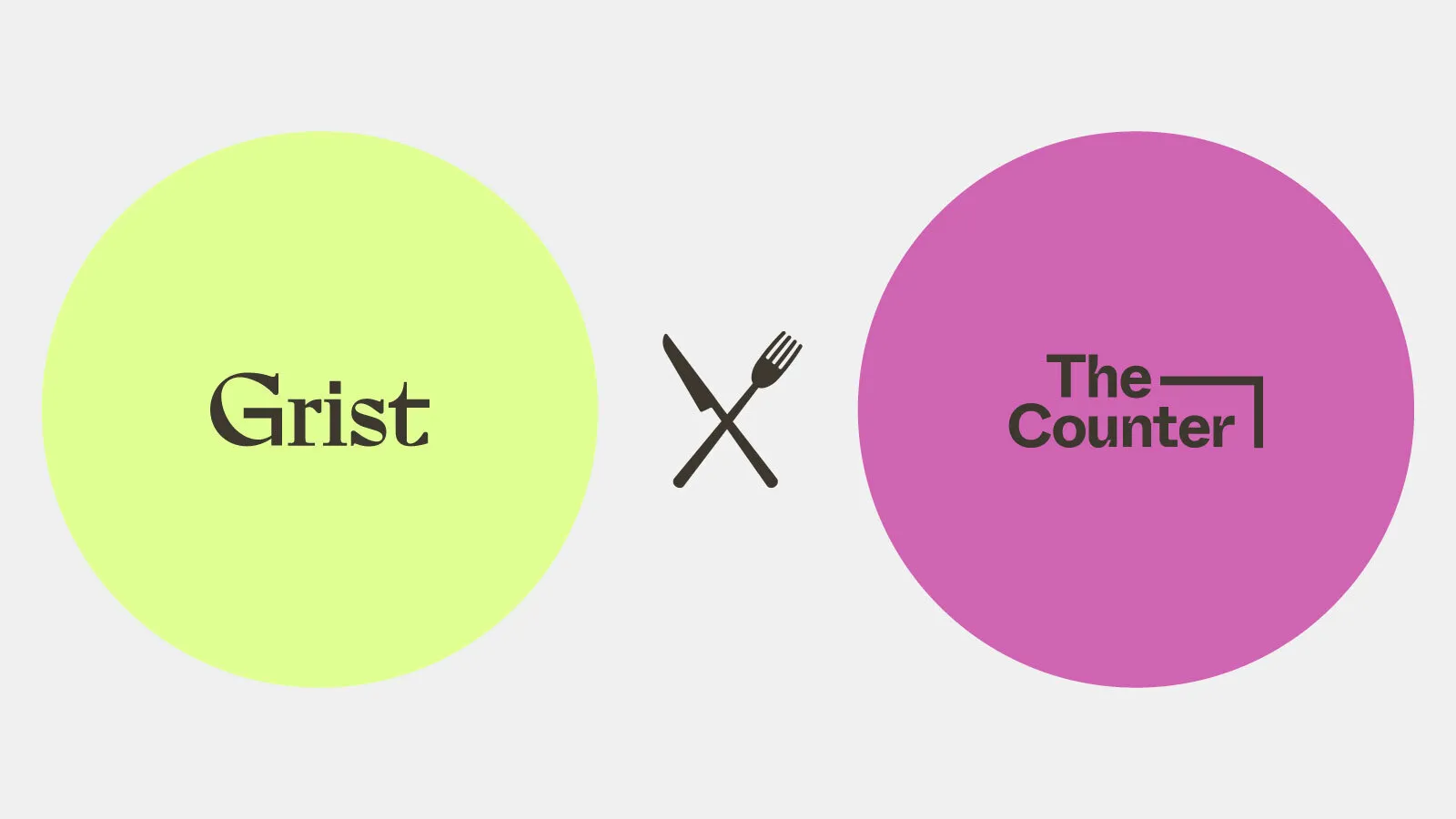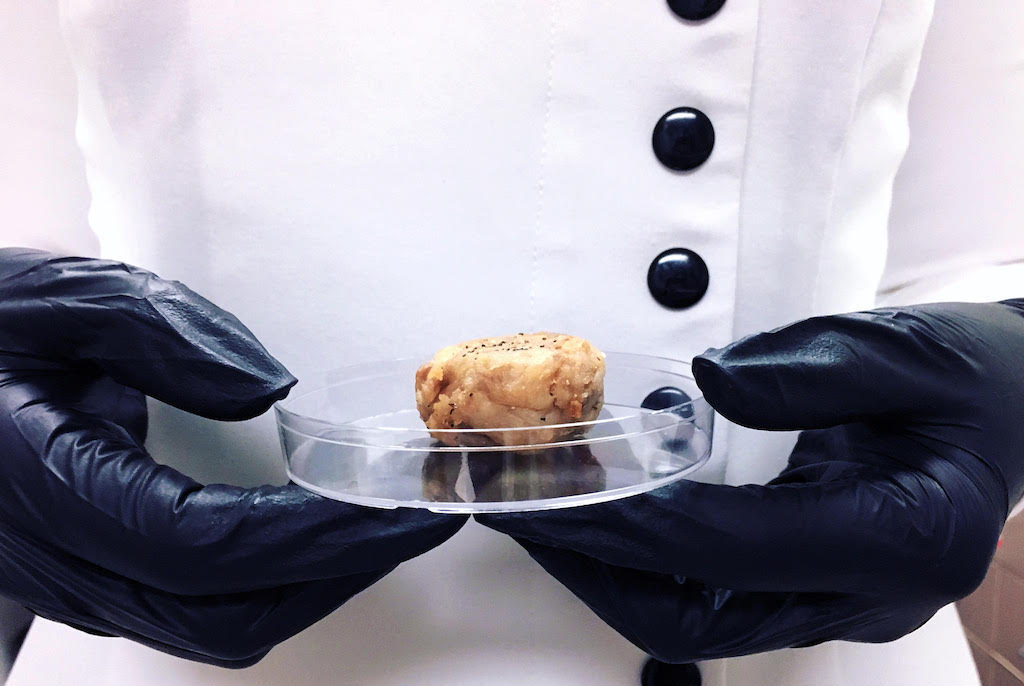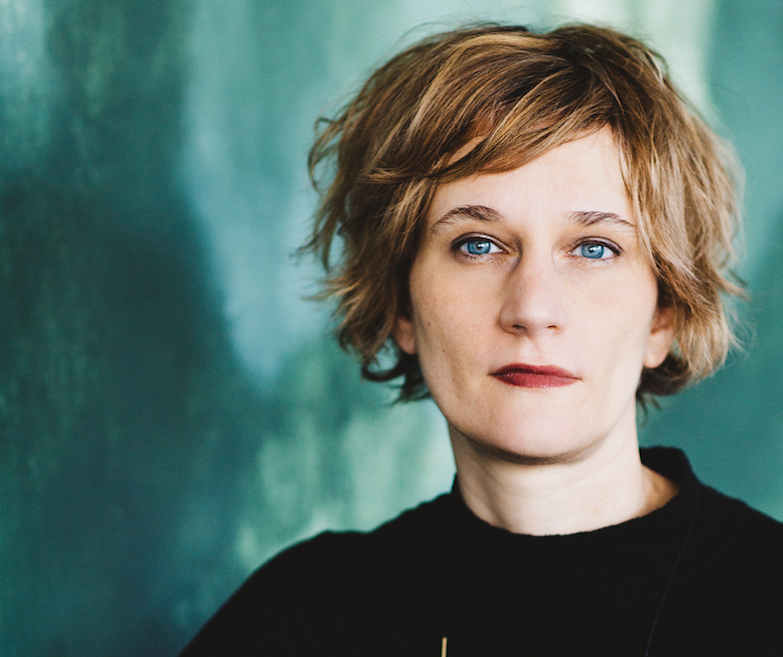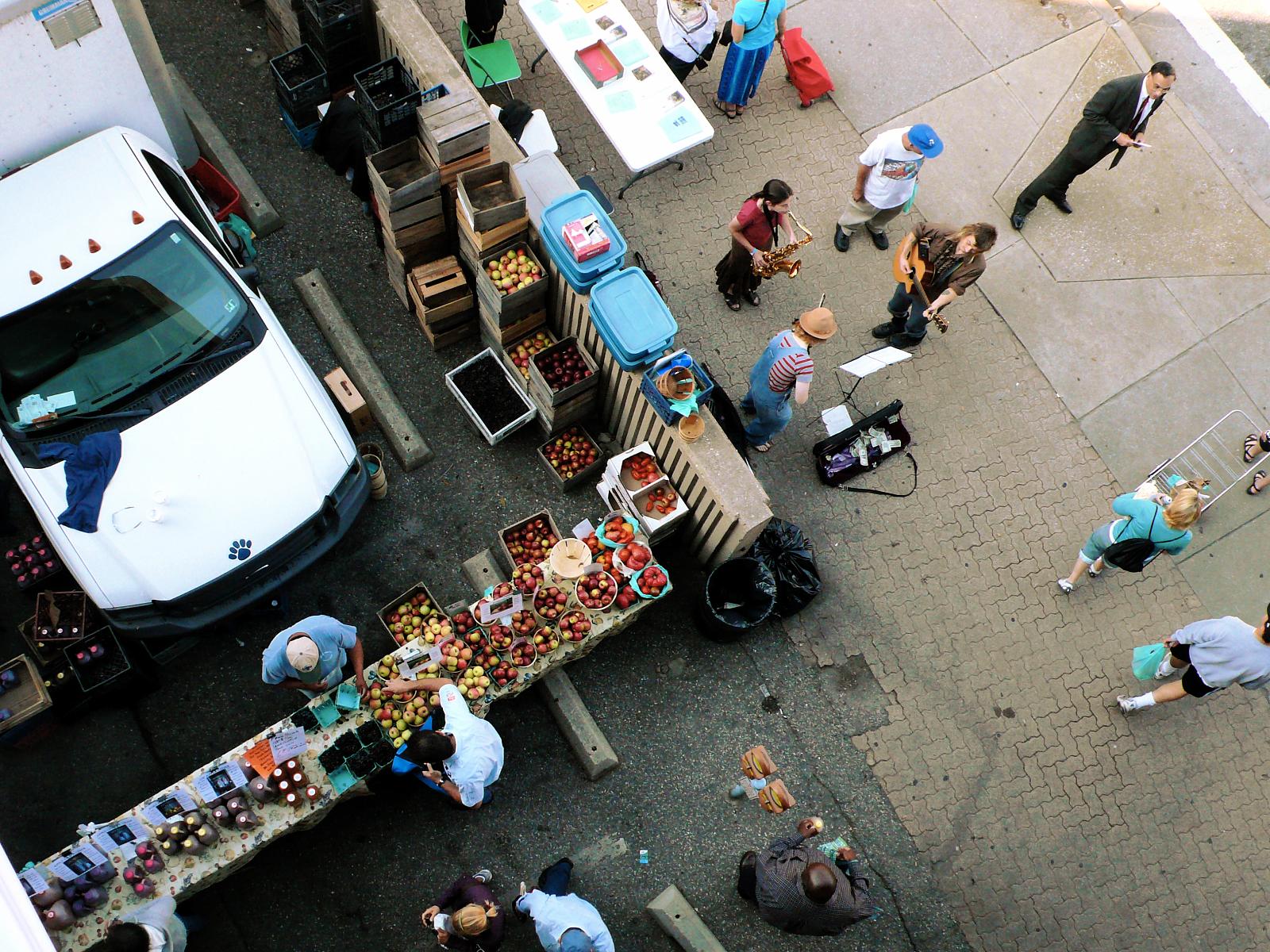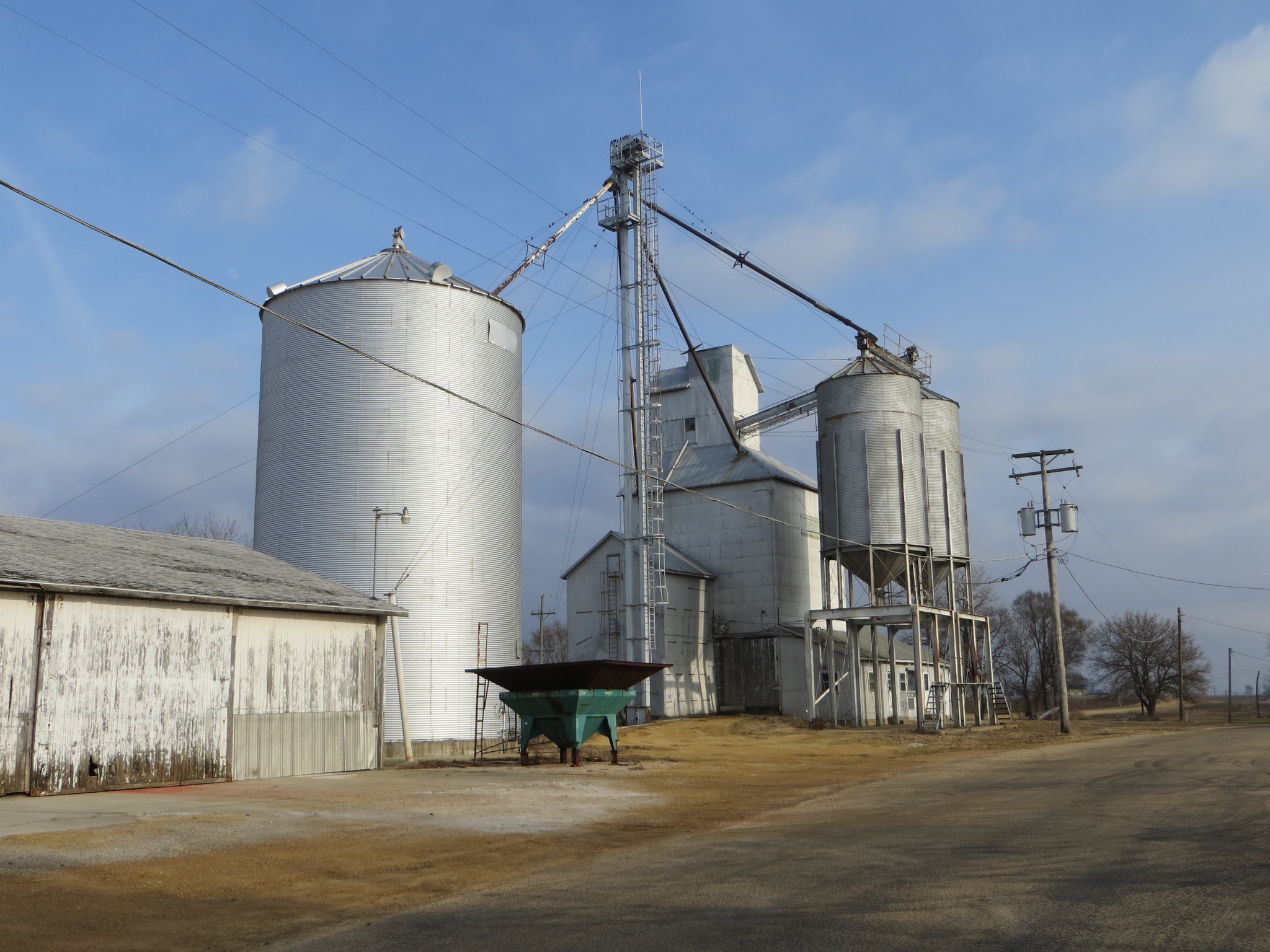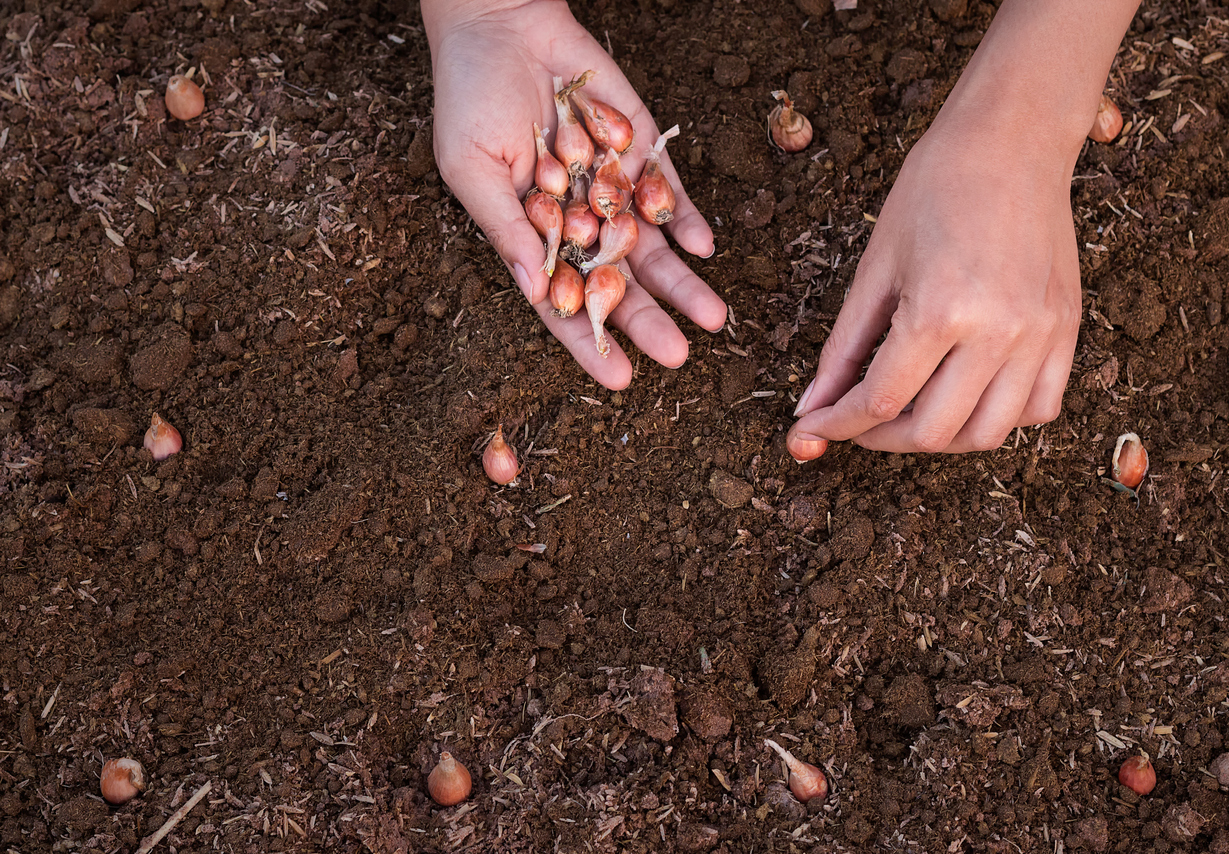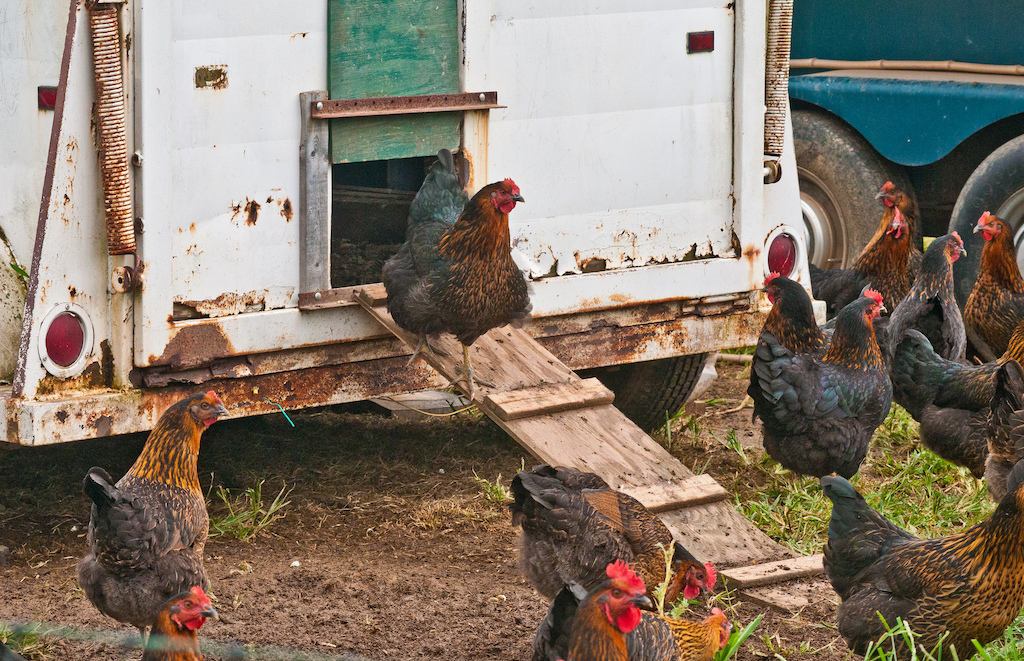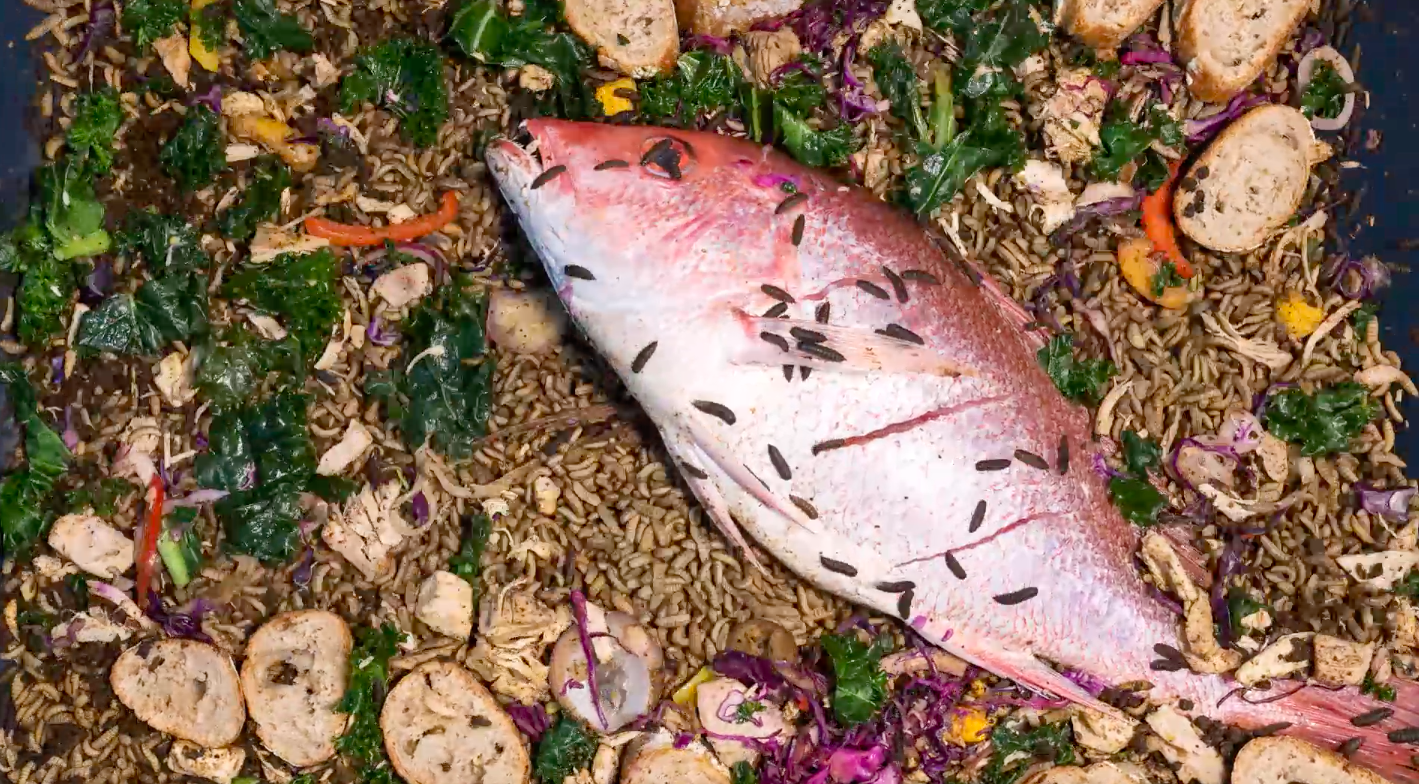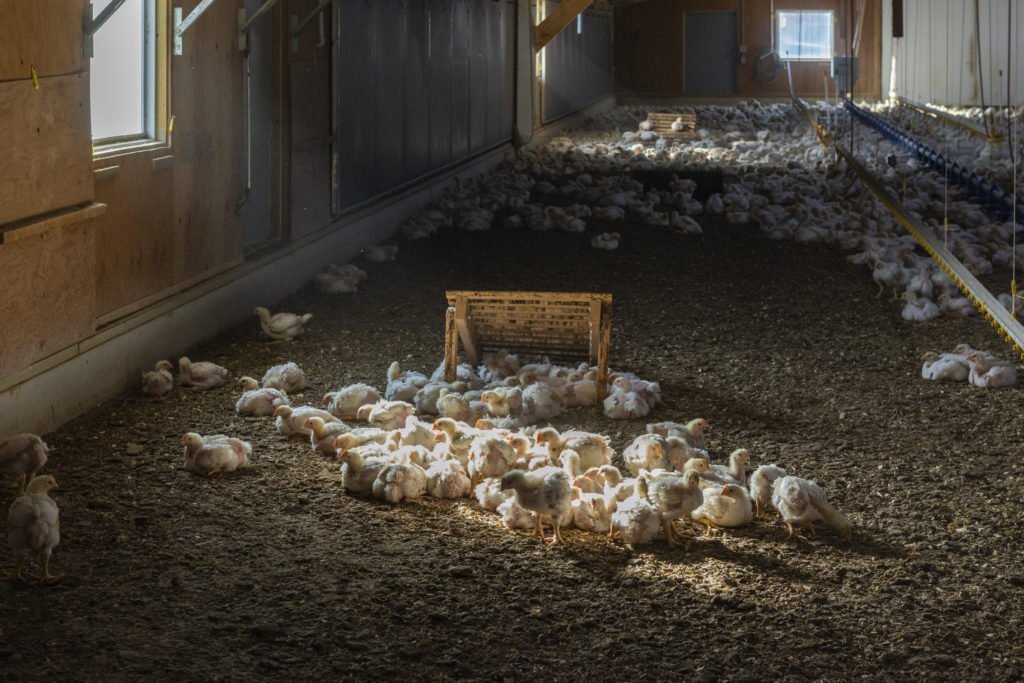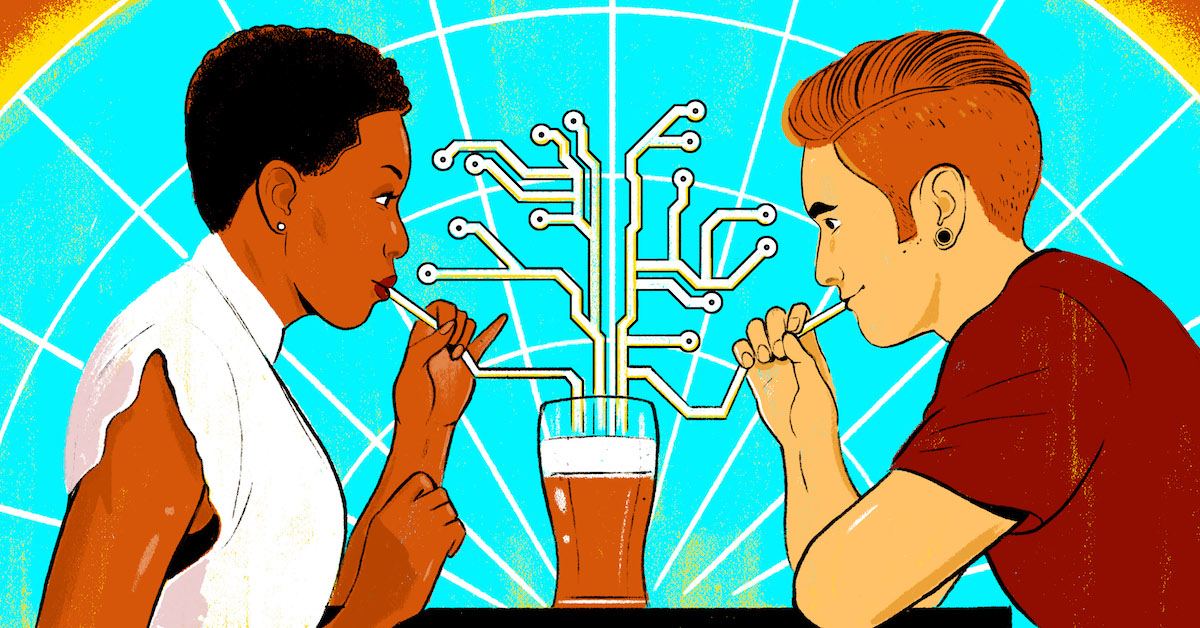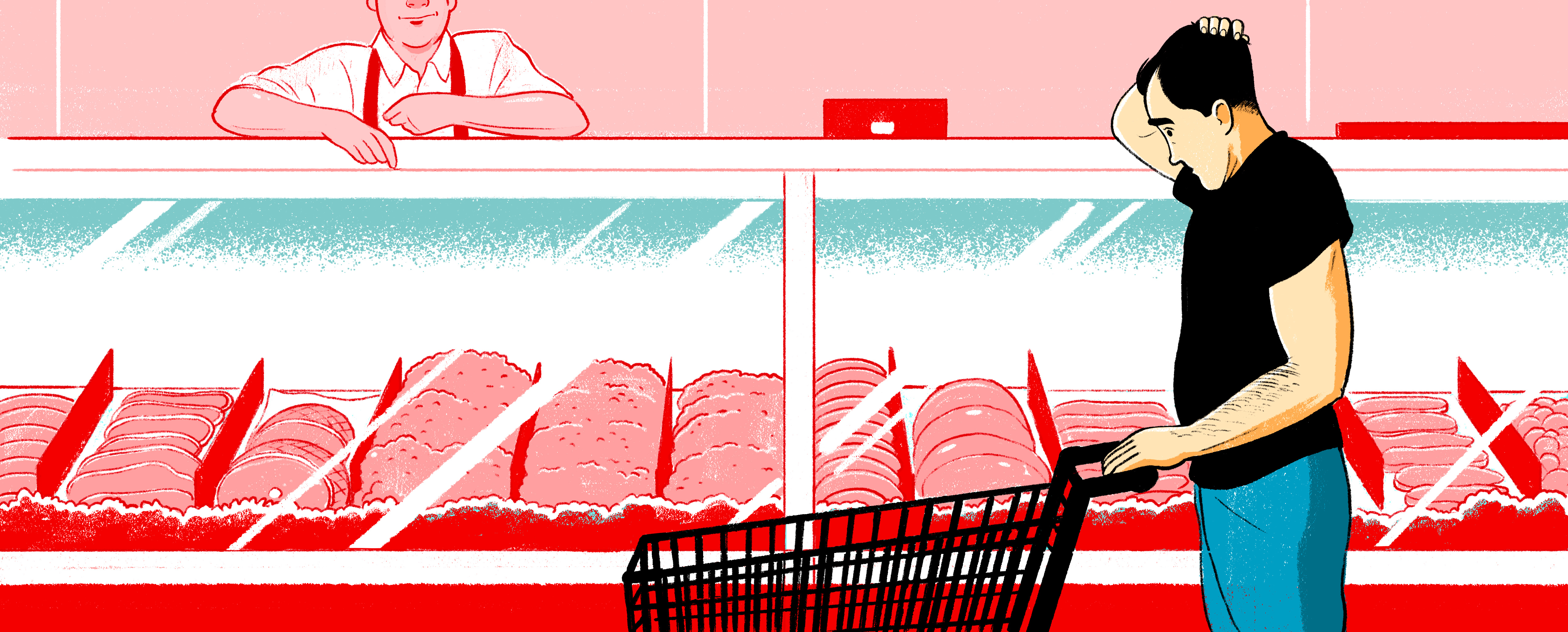
Alex Fine
Our meat eating habits, no longer a matter of basic sustenance, have become ethically fraught, deeply personal questions: Money. Health. Animal welfare. Environmental impact. Here, five American eaters navigate their way through the messy middle.
In its essence, food is simple. It’s the transfer of the sun’s energy from plants to animals and then, in turn, to us. But this elemental transaction has become one of the most loaded sociopolitical and economic issues of our time. And meat is the raw nerve in the heated national conversation about the impact of our food choices.
Conflicted about eating meat? Marion Nestle will answer all your food conundrums during a Twitter Q&A this Thursday at 1 p.m., EST. Here’s the lowdown.
Today, outspoken vegans and unapologetic carnivores duel over ethical, nutritional, and environmental values, armed to the teeth with supporting research. Advocacy groups insist we should eat less meat, or only the right meat, or no meat whatsoever. Meanwhile, the rest of us wade through the uncertainty of it all—three meals a day, every day. Our meat-eating habits, no longer a matter of basic sustenance, have become ethically fraught, deeply personal questions.
Did the organic chicken from the supermarket really live a better life? Is the bacon in my breakfast burrito causing antibiotic resistance in humans? Will the grass-fed burger I grilled for dinner contribute to global warming?
Over a decade after Michael Pollan’s The Omnivore’s Dilemma made mindful eating a cultural maxim, it’s now common to think twice about the implications of our meat consumption. Peter Singer, the philosopher and author of Animal Liberation, the 1975 book that popularized the moral idea of equal consideration for animal suffering, says he’s witnessed the rise of a new class of conscientious consumer.
“Throughout developed countries, people are learning to ask tough questions about where their food comes from and how it was produced,” he writes, in The Ethics of What We Eat. “Questions like these are part of a growing movement toward ethical food consumption.”
It’s not just vegans anymore. The larger herd of ethical eaters includes a group I call conscious carnivores, an unstudied population that dwells somewhere on the spectrum between absolutist poles. It is a place I know well. I live in a farming community in eastern Oregon, where the slogan “know your farmer, know your food” is a fact of rural living—as is a chest freezer containing a quarter steer, a half hog, a whole lamb, and assorted whole chickens. Our year’s supply of animal protein is all raised on pasture and killed on-farm. Seasonal vegetables are the center of my plate, and I swear off all factory-farmed meats.
And yet, in the process of raising a family, traveling, socializing, and eating out, I have caught myself slip, swiping a slice of pepperoni pizza off my kid’s plate at the brewpub, enjoying homemade chicken enchiladas at a friend’s, and feasting on pho and dim sum on trips to Portland, six hours away.
I started wondering how other conscious carnivores do it. How does one live consistently as an ethical omnivore considering the messiness of real life—at Thanksgiving dinner with our families, out to dinner with friends, at potlucks and business meetings? How does it feel to be a human being trying to make difficult choices, navigating around industrially produced meats? And most importantly, do the combined efforts of regular people eating around their values make any measurable impact on changing our food system for the better—and if so, which choices matter most?

graphic by Alex Fine
In an effort to answer some of these questions for myself—and in so doing, reflect back in a reported story for The New Food Economy the experiences of other eaters—The Conscious Carnivore Project came to be. For several months, I pored over group interest boards, international studies, and the work of some of the most noted thinkers on matters of ethical eating, animal welfare, and livestock farming. Through personal contacts and social networks, I put out the call for other self-identified conscious carnivores.
They responded immediately, ready to talk. So many, in fact, that I created a questionnaire to identify people from as many different backgrounds, age groups, and regions of the country as possible, screening out hunters and people who butcher or raise their own meats. I heard back in detail from 24 “civilian eaters” (as we have come to call them while working on this project) and selected several to interview in-depth.
Next, I contacted a handful of experts to collect as many perspectives on the issue as possible, from animal welfare professionals to food justice advocates and one ecomodernist. In total, I interviewed more than a dozen people by phone to understand what it means to live as a conscious carnivore in the 21st century.
Is this feasible, I asked them? What’s at stake? In a complex, imperfect world where absolutes cannot offer us viable answers, honest conversation seemed like as good a place as any to start.
conscious carnivore quote card
Jim Earles, age 42, remembers the moment during college in Dubuque, Iowa, when he became a vegetarian. In an environmental studies class he learned that it takes 1,800 gallons of water to raise one pound of beef. “All of the resources and inhumanity that goes into meat production,” he says. “It was a no-brainer for me. I just decided, ‘I can’t do this anymore.'”
What’s abhorrent to some is industrialized agriculture that treats animals as inputs in a system devoted to efficiency and profit
As an ethical vegetarian living in a social justice commune east of Dubuque, Earles subsisted on mac and cheese, ramen, and tofu. After a year in the seminary, he took a new path toward eastern religion, including Taoism and other “circle of life” philosophies, and yoga. Later, he learned about the traditional foods diet promoted by the Weston A. Price Foundation and came to see meat as a nutritious food aligned with his values. “Meat eating itself is not wrong or cruel,” he tells me. “It is what the system has become.”
For some, there is no ethical justification for eating meat, and killing farm animals is unconscionable in a world where other options are readily available. But conscious carnivores like Earles accept the raising and killing of farm animals for food from the perspective of “least harm”—an ethical theory that guides decision-making when there is no ideal choice. So long as livestock is treated compassionately, that is to say, a good life free from confinement and illness with a quick and stress-free death, the meat is ethical.
“I see consciousness in all living things, whether they be plants or animals,” says Earles. And while he doesn’t monitor his meat consumption, he guesses that he eats much less than an average 40-year-old in his community. “I look at good intentions and gratitude when I’m preparing the food.”
Do abstemious diets actually make a difference?
As a “vegetarian convert,” Earles is not alone. One study by the Humane Research Council, which monitors public opinions related to animal issues, found that within one year of choosing to follow a vegetarian diet, five out of six people reverted (slightly less for vegans). And while their reasons are varied, it seems that “pure” diets do not work for most human beings.
As a married father of three, Earles may understand this better than most: one of his daughters will not touch meat, his son follows the paleo diet and can’t get enough meat, and his wife—who grew up on a farm nearby—still prefers a meat- and dairy-centered diet.
She is the breadwinner and works in tech. Earles tells me, “I’m the long-haired, big-beard, stay-at-home yoga teaching home-school guy.” This lifelong Iowan shares that he feels like a “fish out of water” living in the largest pork producing state and navigating the middle way.
What’s abhorrent to Earles is not killing farm animals per se, but industrialized agriculture that treats animals as inputs in a system devoted to efficiency and profit. It’s a system Earles calls cruel and unsustainable.
Still, the question remains: Do abstemious diets like Earles’s actually make a difference?
The magnitude of meat
Recently, I watched the new documentary Eating Animals, based on the book by Jonathan Safran Foer. It traces the “race to the bottom” of industrialized animal agriculture: farm animal abuse, environmental degradation, and unregulated practices subsidized by the farm bill and endorsed by the United States Department of Agriculture (USDA).
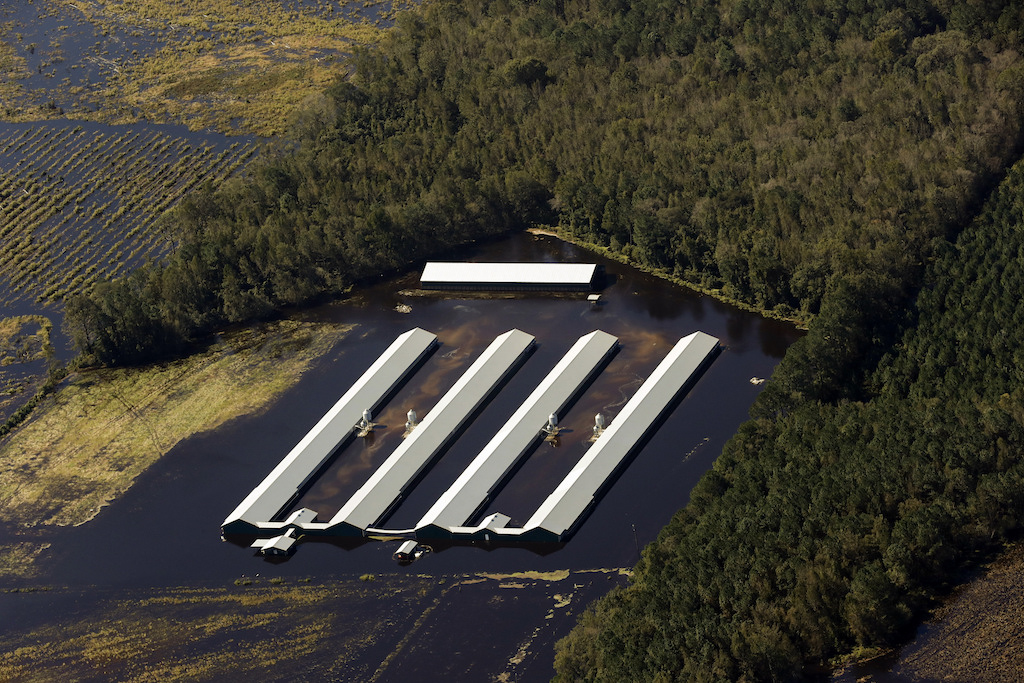
Photographed above is a concentrated animal feeding operation (CAFO) in North Carolina
An affecting film, it still felt like familiar territory, a litany of problems without a vision for the future. Since the 2008 release of Food, Inc., it seems we’ve made little progress: Our meat eating still results in unspeakable animal suffering while taking a toll on workers, waterways, lands, public health, and the planet.
Ten years later, we still know only enough to be … anxious.
What I wanted to find out was how much, if anything, has been changed by our heightened awareness and concern.
Leah Garces is U.S. executive director of Compassion in World Farming, a group advocating to end factory farming, and appears in Eating Animals with the former Perdue chicken farmer-whistleblower, Craig Watts. Like Joel Salatin in Food, Inc., this film profiles renegades, including veteran poultry breeder Frank Reese. According to Garces, these “rebels” are the big takeaway of the film: “That’s a kind of lesson of courage to us all. You can’t put your blinders on and just accept what is.”
Garces is unequivocal that American consumers have direct influence on corporate practices through the purchasing behaviors she calls “data points.” “There is a very clear indication that people are willing to pay more where the animals are treated better,” she tells me. And major corporations—especially their shareholders—are listening.
“If we want to end Big Ag, it’s going to have to come to the point that it is not profitable.”
Consumer pressure has led to hundreds of corporate commitments to eliminate battery cages, veal crates, gestation stalls, and most recently, to slower growing chicken breeds. In 12 states, voters have put the “final nail in the coffin” for corporations to assure better treatment for farm animals by passing new regulations. Prevent Cruelty California is the latest extreme animal confinement ban aiming for the November ballot in a state that is now the fifth largest economy in the world.
Meanwhile, growing public awareness about the potential threat of superbugs, pandemics spread by antibiotic-resistant bacteria, has led to some meaningful changes. Both Perdue and Tyson signed NAE (“no antibiotics ever”) pledges in 2017. Dunkin Donuts, Panera, Wendy’s, and other fast-food companies have switched to antibiotic-free chicken and turkey in recent years.
The pork industry has responded more slowly to public opinion surrounding the elimination of antibiotics that cause drug-resistant diseases in humans. Applegate (owned by Hormel) and Niman Ranch (owned by Perdue) promise NAE in their bacon and all other pork products, while Tyson and Smithfield recently launched “antibiotic free” labels.
Still, these incremental changes are not enough for some—which is why conscious carnivores like Earles strive to buy most of their meats directly from the farm. “You have to walk a tightrope emphasizing that you really don’t want anything coming out of these CAFOs [concentrated animal feeding operations],” he says. “If we want to end Big Ag, it’s going to have to come to the point that it is not profitable.”
What alternatives exist for those willing to sidestep conventional meat production entirely?
In his home state, citizens are challenging the hog industry’s longstanding hegemony over air and water quality and waste management in court. This on the heels of a landmark verdict against a subsidiary of Smithfield Foods in North Carolina, the first trial in an ongoing civil lawsuit.
These grassroots efforts are part of what Eric Holt-Giménez, director of the think tank Food First, calls a “very embryonic expression of a counter movement.” Citizens increasingly recognize who is getting all the profits—and how communities and environments bear the real costs—and that marks the “de-legitimization of the corporate food regime,” he tells me.
But what alternatives exist for those willing to sidestep conventional meat production entirely? And do those substitutes introduce new challenges of their own?
The meat market
Today, you can order online one of Frank Reese’s standard-bred turkeys from Heritage Foods USA, Iberico pork from White Oak Pastures, or a share of grass-fed beef from the tech startup Crowd Cow. To skip the shipping costs, you can go to a farmers’ market, one of the 8,733 listed in USDA’s local food directory database.
Those interested in buying in bulk can join a meat-buying club or contact a farmer through Eatwild.com to purchase a share of a live animal, cut to your specifications and picked up at an appointed place and time.
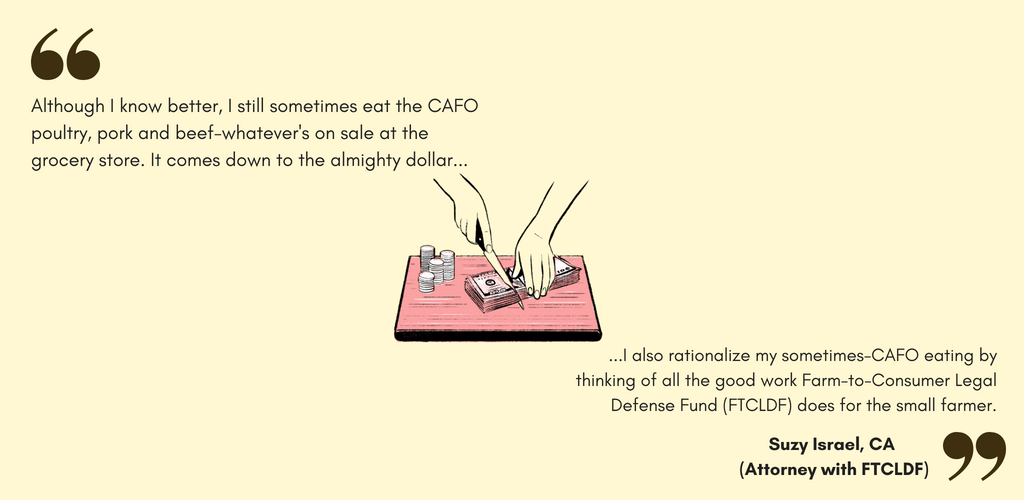
Graphic by Alex Fine
These options may seem to come without the ethical baggage of conventional meat. But there’s another problem: They’re going to cost you.
Aggressive concentration and integration of the modern meat industry by the world’s largest meat packers—JBS, Cargill, Tyson, and National—has left independent livestock producers who don’t participate in the commodity market out in the cold. They lack the efficiencies and economies of scale for processing, transport, and distribution to compete with the giants. And that makes their products much more expensive.
Small- to mid-scale producers have to pound the pavement to find a USDA meat processing plant within a reasonable day’s drive. The number of slaughter facilities, both federally inspected and uninspected, has dropped 40 percent since 1990, creating a bottleneck for regional suppliers. For example, it can cost up to eight times more to slaughter, cut, and package each head of grass-fed cattle, according to a report by The Stone Barns Center for Food and Agriculture. That figure doesn’t even address the costs of getting products into the hands of wholesale and retail customers.
“We don’t eat meat at every meal. We consider it a luxury.”
All this means that conscious carnivores tend to face a difficult choice. They can choose meat produced by agricultural giants who have succeeded wonderfully in bringing Americans cheaper food—while externalizing costs onto animals, workers, and the environment. Or they can go with products that take less of a toll but carry a higher sticker price. For many, basic economic considerations put ethically minded eating out of reach.
Hannah Barkey lives in Waxhaw, North Carolina, a small town an hour south of Charlotte. She teaches yoga, her husband works at a nonprofit, and together they run a cleaning business that earns them $20,000 a year. Still, they try to make ethical decisions when it comes to meat in their diet.
“The only difference with other people in our income bracket is that we don’t eat meat at every meal,” she says. “We consider it a luxury.” The couple prioritizes fruits and vegetables, rice and beans, and sets aside money for their once-a-month meat splurge. “We might ‘go crazy’ twice a month,” Barkey tells me.
It’s important to acknowledge that food choice itself is still the purview of the privileged. Still, every one of the conscious carnivores I surveyed indicated that affordability is a challenge, and they make sacrifices to fit ethical eating into their household budgets.
Barkey grew up on a 200-acre farm nearby. Now 30 years old, she lived as a vegetarian for 14 years before she met her husband, a “weirdo, third culture kid” raised in Peru who reintroduced her to meat eating. He also introduced her to writer Wendell Berry—not only his books, but the gentleman farmer-environmentalist himself at one of his Sunday open houses, and the couple announced their engagement to him.
As a former farm girl, Barkey doesn’t flinch from the life-and-death facts of being a meat eater. “It’s a very real thing for me,” she says. “The connection with death as well, knowing where something comes from, you take it a lot more seriously.”
Small-scale production does not universally guarantee the most compassionate or sustainable animal husbandry.
She and her husband shop from a meal plan each week at the grocery store. Organic produce is out of their price range, but they prioritize local eggs when they can and sometimes buy a chicken, “the little ones labeled organic.” Barkey says, “If it’s an illusion at least I’m voting for the illusion.”
It’s a reminder that, even for informed eaters, food labels on cuts of meat can be difficult to decode. “Natural,” “no hormones,” “free-range,” and even “grass-fed” are some of the unverified labels that clutter the packaging on retail meat cuts, competing for our attention and making it difficult to determine what to prioritize as we spend our hard-earned cash.
Animal Welfare Institute (AWI), an animal protection organization, publishes a consumer guide intended to help us cut through the greenwashing. But by and large, shoppers are more confused than ever by the plethora of animal welfare claims and don’t trust them, according to Dena Jones, director of AWI’s farm animal program. To make matters worse, she points out, those all-important third-party certifications range from a very low animal welfare standard, such as American Humane Certified, to the highest, like Animal Welfare Approved.
“It’s hard to know what goes into the food that ends up in the grocery store,” says Barkey. She believes the companies don’t want you to know. No wonder conscious carnivores attempt to sidestep label claims entirely by buying directly from farmers they trust—though it’s important to point out that small-scale production does not universally guarantee the most compassionate or sustainable animal husbandry.
Many of the conscious carnivores I spoke to purchase organic meat, even though they suspect that label promises more animal welfare than it really delivers. The USDA organic certification, especially for poultry, is a hotbed of obfuscation since current standards do not require genuine outdoor access. An organic chicken may have lived on green pasture, or at least with more space in a barn with natural light and a real door to a dirt patch. But it could just as likely be a bird that, other than eating organic feed that’s GMO- and antibiotic-free, lived its 47 days to market weight in the same confinement conditions as conventional chicken.
Similarly, “grass-fed” is not a regulated and consistent standard, despite valiant efforts by the American Grassfed Association to work with USDA to establish a standardized legal definition. A package of ground beef may have come from cattle that grazed on forage or may have been finished in a “grass feedlot,” eating grass-like pellets. And even if the label says, “Product of the USA,” it may have come from Australia or Ireland.
The increasing number of labels on food packaging is a response to our desire for better transparency—and yet even some of the most coveted and trusted claims still leave us in the dark.
The clarion call to cut back on meat
Min Kim grew up on hot dogs and ichiban ramen. She was a year old when she emigrated with her parents from South Korea. A child of the low-fat 1970s, she watched Julia Child and started cooking for her family at elementary school age.
Now 48, Kim is a married mother of two college-age children and lives in north county San Diego, where Bill Gates bought the horse farm owned by Jenny Craig. Kim was the only respondent out of 24 who singled out health as her primary motivation for living as a conscious carnivore.
In 2008, Kim shifted the family’s diet practically overnight. “My daughter was struggling with allergies, and I delved into traditional foods,” she says. Kim sums up its precepts: “Getting back to eating how we should. Caring how animals are raised and how it affects our health. Seeing food as medicine.”

Graphic by Alex Fine
While nearly all of the family’s meals are home-cooked, when they do eat out, Kim orders the vegetarian option. But in social settings she doesn’t want anyone to feel uncomfortable about ordering the burger. Communing over food is a privilege, she says. “I always tell my kids that it’s better to eat the ‘wrong’ food with a good attitude than eat what you think is the ‘right’ food with the wrong attitude,” she tells me. “I want them to be gracious wherever they are.”
Kim started buying pasture-raised meats after reading articles citing their enhanced nutritional value, including omega-3s and other “good fats” and absence of antibiotics. Through word of mouth, she got connected to a dairy farmer nearby who sells her ground beef from a single animal for $5 a pound.
For eight years she’s stocked the freezer. “I had to really convince my husband that paying for good food now is better than paying for health care later,” she says. But she economizes, buying cheaper cuts of meat and whole chickens. “The kids both know how to cut down a chicken and use all the parts,” she says. They eat a lot of organ meats, too, especially chicken liver.
Another shift for the family is eating less meat in general. “We got caught up in the whole paleo thing, but I didn’t feel good,” she says. “Koreans eat meat as just a small portion, a little bit of meat, a lot of broth.” Generally, the family eats one main meal with meat, but on other days there’s no meat at all. “As humans we’re not meant to eat meat every day,” Kim says.
One key element in the Reducetarian approach is plant-based proteins and meat alternatives, including cellular meats.
About 60 percent of the conscious carnivores who responded to my questionnaire reported that they eat less meat than they did a year ago. This is slightly lower than the two-thirds of Americans who reported eating less of at least one type of meat over the past three years in a 2015 web survey. The resulting 2017 report, “Reducing Meat Consumption in the USA: A Nationally Representative Survey of Attitudes and Behaviors,” examined reasons for these changing habits. Despite a fairly persistent cultural belief that meat belongs in a healthy diet, the study found that even more Americans aspire to meat reduction.
While the authors reported no statistically significant results based on race, ethnicity, or education, it’s not too surprising that socioeconomics is the great divide. Cost was the most common reason cited by lower-income earners (below $40,000) for cutting back, while health was the main motivator for those in higher-income brackets (over $40,000). Concerns about animal welfare and environmental impacts ranked just behind. People used several strategies in reducing their consumption: buying less meat (64 percent), smaller portion sizes (56 percent), meatless meals (42 percent) and meatless days (32 percent)—all of the ways Kim and her family have also cut down on meat. Nine percent had given meat up completely.
As the founder of the Reducetarian Movement, Brian Kateman looks to collect everyone who is consciously reducing meat and animal products in their diets for any reason and on any scale. “All motivations matter,” says Kateman, whose vision is to unite a movement—of individuals as well as institutions—to end to factory farming.
Kateman acknowledges pushback from vegan groups, as well as from ranchers focused on regenerative agriculture—some are rankled by the suggestion that meat consumption writ large is the problem, without commenting on the source. But, he tells me, “I continue to be impressed with how willing people are in this movement to work together and put small differences aside to advance our shared mission for a world that’s more compassionate, more healthy, with more happiness and less suffering.”
“I think we’re bouncing back from the paleo movement and now toward the plant-based.”
While Kateman doesn’t want to overplay “the kumbaya card,” he sees a growing consensus among all stakeholders that simply reducing the amount of meats we eat, instead of going all or nothing, can have a significant impact on the 70 billion land animals raised for food each year, overextended natural resources, and greenhouse gas emissions. Most of the top thinkers I consulted, in person and through their work, noted that reducing meat consumption in the U.S., as well as Australia, Canada, and parts of Europe, is essential to helping solve the global economic and environmental crisis.
Meanwhile, USDA projects that after price increases and health concerns between 2005 and 2014 caused a downturn in meat consumption in the U.S., it will rise again to a record high of 222.8 pounds per person, per capita annually—or 10 ounces a day—in 2019. So, the Reducetarian Movement’s current goal of a 10-percent per capita decrease promises to be a stringent one.
“I’d be thrilled with 5 percent,” Kateman admits. “We have to look at the reality and the numbers and the situation at hand and move in the direction we want to go.”
One key element in the Reducetarian approach is plant-based proteins and meat alternatives, including cellular meats. Even the meat industry is getting on board: Tyson has invested in Beyond Meat and Cargill in Memphis Meats. Recently, the National Cattlemen’s Beef Association took a stand against the U.S. Cattlemen’s Association petition to USDA to narrow the definition of “meat” and prevent lab-grown, or so-called “clean meats” from using the word. At this stage, it’s unclear which government agency has jurisdiction over this emerging industry.
Min Kim says, “I think we’re bouncing back from the paleo movement and now toward the plant-based.” But she’s also among the 75 percent of conscious carnivores I surveyed who do not currently buy any protein substitutes. This is one group that’s going to need targeted marketing to wow them into the new world of meat alternatives, including the plant-based Impossible Burger and a lab-grown chicken product the Just company plans to release this year. It remains to be seen how much the cost of these products will be a factor for a group of eaters who ardently vote with their forks.
Does voting with your fork help farming or the environment? Or neither?
As a whole, conscious carnivores believe that buying directly from farms and farmers’ markets is not only good for local economies but is also better for the environment. These twin convictions are also the foundation of the societal push toward better food for more people that’s evolved over the past 20 years—what some would call “the food movement.”
Living in an agricultural area for nearly 20 years, I’ve witnessed the benefits of rural development investments in farming and mainstream interest in humanely- and pasture-raised meats. Millennials have returned to their parents’ ranches in this land- and water-rich mountain valley with marketing educations, grazing plans, and fresh ambitions. A cattle ranching area since the 1850s, it’s only recently that you can get a locally raised grass-fed burger at the R&R Drive-in, a bison burger at the brewpub, and buy pastured goat and chicken at the farmers’ market.
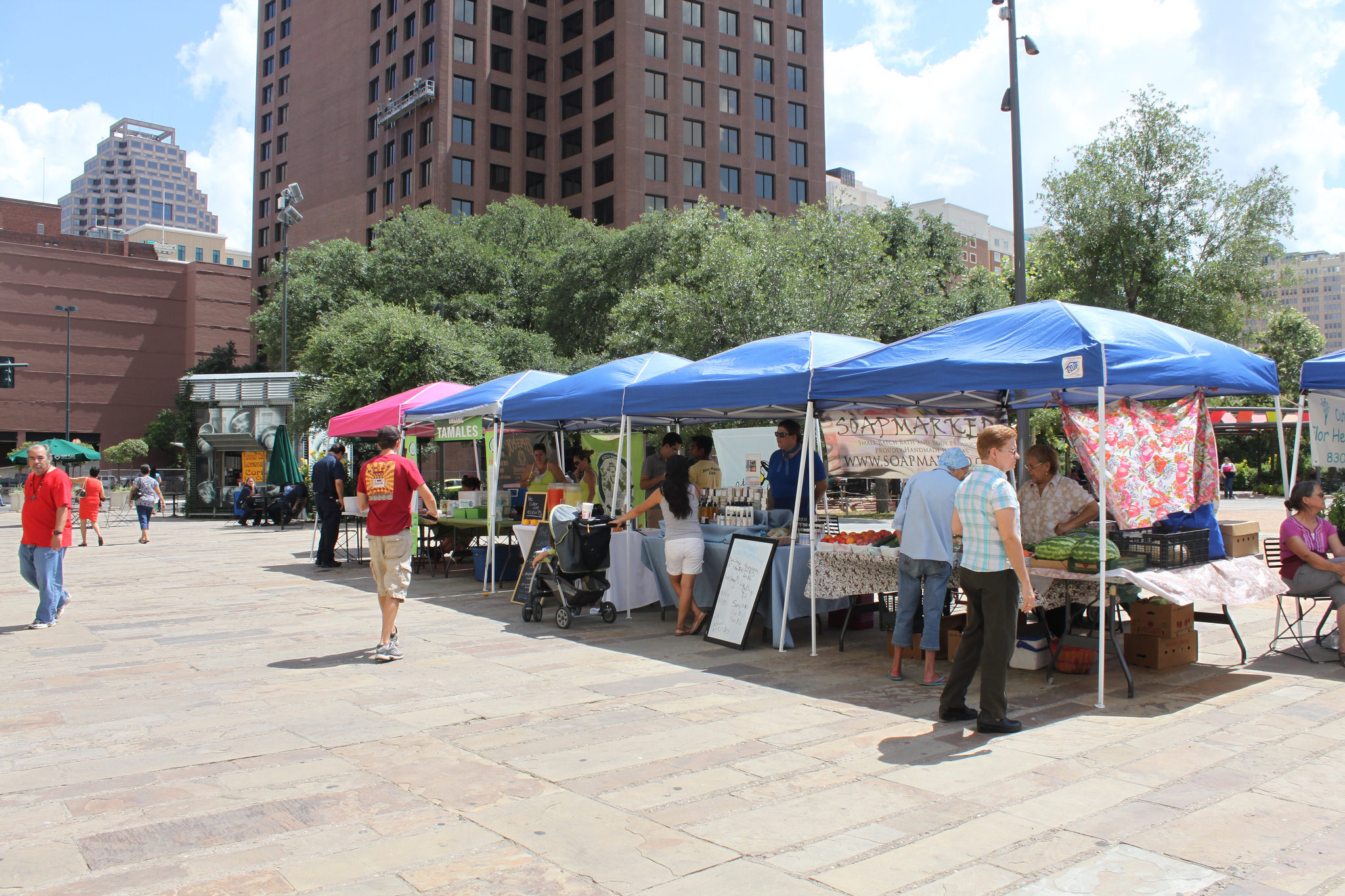
There are 8,733 farmers’ markets listed in USDA’s local food directory database. Conscious carnivores believe that buying from them is not only good for local economies but is also better for the environment
In my area, there aren’t the obvious signs of depletion and rural depopulation seen in places like Kansas. But this corner of eastern Oregon hasn’t escaped the social and economic issues of anywhere in rural America, including food insecurity and diet-related health disparities. And for anyone who raises livestock, it’s still a four-hour drive to the nearest USDA processing plant in Idaho.
A 2015 USDA report to Congress on local and regional food systems found strong sales of local foods, including direct-to-consumer and institutional buyers, estimated to total $6.1 billion in 2012. The agency declined to offer any additional economic analysis or predict trends, however, citing the need for more data.
Amanda Oborne, vice president of Food & Farms at Ecotrust, a social entrepreneurship organization based in Portland, Oregon, has collected the “hard numbers” for the Pacific Northwest. She says, “When dollars are spent directly, the money doubles in the region.” Called the multiplier effect, it’s the impact of buying local product from producers who then hire labor and buy supplies locally, for instance. And it’s a sliver of hope to reverse the disappearance of small- to mid-scale farming in the U.S.
The farm Hannah Barkey grew up on in North Carolina has been in her family since the 19th century. Her father raised cattle, pigs, and chickens following holistic management, a triple-bottom-line land management system. But five years ago, he was forced to return to teaching full-time and rent out the land to corn and soy growers.
“I’m one person, yes, but I’m one person who is sleeping better at night … and honestly that’s better than bacon.”
“Farms are dying everywhere,” says Barkey. When she met Wendell Berry, “I wanted to fall on the floor and cry,” she tells me. “He understands how rural life is dying.”
Oborne sees the gap in small- to mid-scale agriculture as a key part of the puzzle. Ecotrust has invested $25 million in a food-hub incubator called The Redd in Portland to provide the infrastructure needed to connect ranchers, farmers, and other food producers with hospitals, schools, and institutional food service providers, what she calls “ag in the middle.”
Oborne also tells me that one of the many benefits is that the small- and mid-sized producers, like Carman Ranch in Wallowa, Oregon, are often synonymous with regenerative agriculture. “Good meat builds good soil,” she says. It’s a mouthwatering idea that economic and environmental revitalization could go hand in hand.
Kim from San Diego notes how her friends who own Primal Pastures, a diversified farm in Temecula, California, have healed the land while building a thriving family business. “They bought a patch of dirt and then grass started to grow,” she says. Transitioning to this type of meat production, she believes, is a much more realistic goal than getting people to stop eating meat entirely.
I’ve seen this transformation myself at Carman Ranch, where my friend Cory Carman, a fourth-generation rancher, raises Hereford cattle, heritage pigs, and perennial pastures. While revitalizing overgrazed land on her family’s 100-year-old ranch, she has created a model of regenerative agriculture while building one of the largest grass-fed beef supply chains in the Northwest.
It may look like the ranch her grandmother remembers, but this is not about turning back the clock. For Carman and others leading the charge, their work involves applying modern science and rigorous research to adapt grazing strategies. While it’s become common to criticize the meat industry’s enormous impact on climate change—cattle are like gas guzzlers, causing 14.5 percent of greenhouse gas emissions globally—Carman views her cattle as tools for cultivating the soil. Through well-managed and systematic grazing, livestock have been shown to restore overgrazed lands, build biodiversity, and increase soil organic matter and productivity.
Although grass-fed cattle represent only 3 percent of the 30 million cattle raised and slaughtered for beef in the U.S. each year, there are increasing numbers of passionate people who champion the potential of livestock to help sequester carbon and mitigate climate change.
But others remain skeptical.
The Breakthrough Institute is a think tank located outside Oakland, California, that proposes addressing climate change by intensifying industrial agriculture. It turns out that the natural process of converting the sun’s energy into plants and then meat, especially ruminants, is highly inefficient. So technology, including feeding regimens and breeding livestock for increased biological speed and growth, has made those inefficient natural processes highly efficient at industrial scale. Of course, there are always tradeoffs, says Dan Blaustein-Rejto, a food and agriculture analyst at Breakthrough.
Given the rising global demand for meat and research indicating that CAFO-raised cattle contribute less greenhouse gas emissions than grazing animals on the land, researchers at the Breakthrough Institute posit that factory farming may be the more climate-smart solution in the long run.
“I have little doubt there are ways of grazing cattle that are lower [in carbon emissions] than feedlot production,” Blaustein-Rejto says. But he questions how much production we can expect from pasture-based systems, how much land that will take, and can we honestly expect ranchers to universally adopt the demanding grazing practices that are carbon neutral? “It’s a major open question,” he tells me.
On becoming food citizens
Five months ago, Anastasia Christman was a conscious carnivore. A 50-year-old policy analyst who telecommutes from Walla Walla, Washington, she ate for years according to her values. “I purchased meat to limit the global footprint. I’d buy from local producers and not corporate organizations,” she says.

Graphic by Alex Fine
Now residing in an agricultural area of eastern Washington, she has friends from farming families and understands how the traditions and local economies sustain community. And through her professional lens, she sees all the jobs that the meat industry provides. But issues over grazing rights on public lands, water and land use, and global climate change got to be too much, and she refused to support the corporate meat production system any longer.
One day in January of this year, she went cold turkey on meat. “I miss meat—oh, how I miss it,” she says. “Even if I buy local from some hippie who lets the cows sleep in the bed and gives them only Evian water, I’m still supporting the underlying system that leads to workers wearing diapers on the line at Tyson because they have to process so many chickens,” she says.
“I’m one person, yes, but I’m one person who is sleeping better at night … and honestly that’s better than bacon.”
The provocative subject of meat is perhaps our most powerful tool for effecting change within our own spheres.[
Christman and the other conscious carnivores I interviewed represent less than a quarter of the people who responded to my questionnaire. I imagine all the untold personal histories and food journeys that could inform new conversations about how to reduce our own isolation and accept our infallibility as ever-hungry human beings, knowing that the entire system is rigged against us, without letting ourselves off the hook. To be brave. To simply do better.
Food is, after all, a social relationship. In A Foodie’s Guide to Capitalism by Holt-Giménez, I learn that as much as the market treats food like an iPhone or a pair of Nikes, it has far more value to us. “Because food is both a commodity and an existential necessity, and because our food system impacts all other aspects of our social and economic system because we all eat, the social relation of food is pivotal in terms of human well-being,” he writes.
And the provocative subject of meat is perhaps our most powerful tool for effecting change within our own spheres. “When voting with our fork, we should remember that the freedom to buy food according to our values does not in and of itself change the power of commodities in our food system,” Holt-Giménez tells me. But in our conversation, I come to understand how it is an entry point to becoming a full-fledged food citizen instead of just a consumer of food.
Anastasia Christman is no vegetarian evangelist, but like the other conscious carnivores I spoke with for The Conscious Carnivore Project, she strikes me as a model food citizen. She recognizes the impact of small personal actions: to invite people over for dinner and only halfway through the meal reveal it’s meatless; buy a CSA share to support food jobs on a family-owned, organic farm; become aware and speak up about public policies, like the farm bill, that affect the people who produce our food and determine who does and does not have access to it.
“I have to believe that a stone dropping in a pond can have ripple effects that influence people to take action,” Christman tells me. “If people think about this a little bit.”
Who’s in?
CORRECTION: An earlier version of this story identified Amanda Oborne as director of Food & Farms at Ecotrust. Her title is vice president. We have updated the story to reflect this correction.
